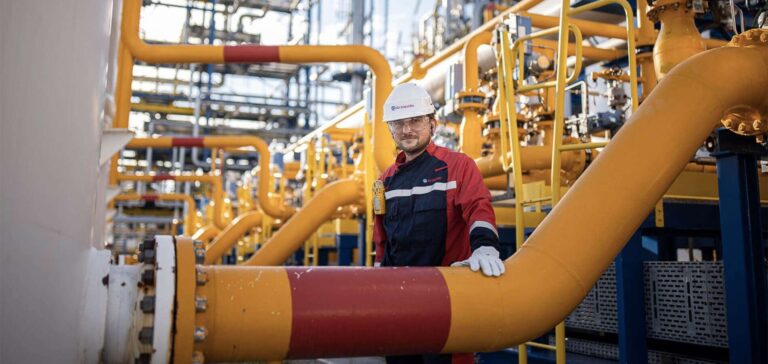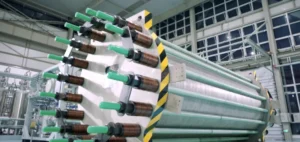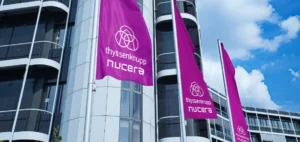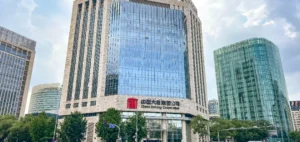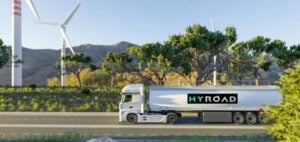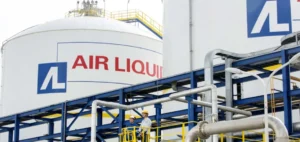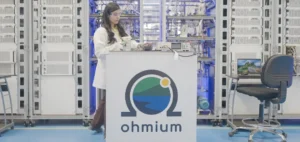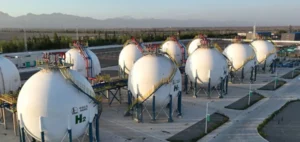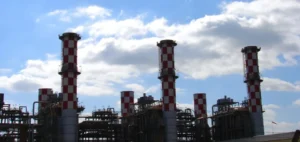Air Liquide reforms the German grid.
By connecting a large-scale renewable hydrogen electrolyzer in Oberhausen, the company is meeting the energy needs of a highly industrialized region.
The special feature: the electrolyzer will be connected to the company’s existing local pipeline infrastructure, at the heart of key industries.
By connecting a large-scale renewable hydrogen electrolyzer in Oberhausen, the company is meeting the energy needs of a highly industrialized region.
The special feature: the electrolyzer will be connected to the company’s existing local pipeline infrastructure, at the heart of key industries.
Air Liquide plans to have 30 MW operational by early 2023
The first stage of thisrenewable hydrogen electrolysis production unit is expected to have a capacity of 30 MW.
The major potential impact of this technology in Germany’s industrialized regions has prompted the company to accelerate the project.
The German Federal Ministry of Economics and Energy is providing public funding, with Siemens Energy as a partner.
The major potential impact of this technology in Germany’s industrialized regions has prompted the company to accelerate the project.
The German Federal Ministry of Economics and Energy is providing public funding, with Siemens Energy as a partner.
This innovative PEM (Proton Exchange Membrane) electrolyzer will produce hydrogen from water and renewable electricity.
The technological solution at the heart of the project has been developed thanks to the joint efforts of Air Liquide and Siemens Energy.
This PEM electrolyzer will be the first industrial-scale unit connected to an existing hydrogen and oxygen pipeline network.
The technological solution at the heart of the project has been developed thanks to the joint efforts of Air Liquide and Siemens Energy.
This PEM electrolyzer will be the first industrial-scale unit connected to an existing hydrogen and oxygen pipeline network.
15 industrial sites connected to the initial network
Today, 15 major industrial sites are already connected to the Air Liquide network and hope to benefit from the electrolyser.
Access to renewable gases would accelerate efforts to reduce the industry’scarbon footprint.
The steel, chemicals, refining and mobility sectors in the North Rhine-Westphalia region would benefit greatly from such technology.
Access to renewable gases would accelerate efforts to reduce the industry’scarbon footprint.
The steel, chemicals, refining and mobility sectors in the North Rhine-Westphalia region would benefit greatly from such technology.
An innovative project of national importance
Renewable hydrogen produced from the PEM electrolyser will accelerate the decarbonization of the industrial basin, promoting clean mobility in a densely populated region.
A first stage will establish a 20 MW electrolysis unit, producing renewable hydrogen, liquid and gaseous renewable oxygen.
Subsequently, Air Liquide plans to increase the site’s capacity to 30 MW.
A first stage will establish a 20 MW electrolysis unit, producing renewable hydrogen, liquid and gaseous renewable oxygen.
Subsequently, Air Liquide plans to increase the site’s capacity to 30 MW.
” [Le projet] illustrates how “green” hydrogen can sustainably transform industry and certain transport sectors. It is also a strong signal of the Rhine-Ruhr region’s positioning in the hydrogen sector”, says Elisabeth Winkelmeier-Becker, Parliamentary State Secretary to the German Federal Minister of Economics.
Air Liquide’s technology will help accelerate the decarbonization of the industrial basin and promote clean mobility.
This industrial-scale hydrogen production gives concrete expression to the partnerships we have entered into, and stimulates the emergence of a sustainable hydrogen economy in Europe.
In this way, Air Liquide is pursuing the following triptych: to be the leader in its industry, to perform sustainably, and to contribute to the energy transition.
This industrial-scale hydrogen production gives concrete expression to the partnerships we have entered into, and stimulates the emergence of a sustainable hydrogen economy in Europe.
In this way, Air Liquide is pursuing the following triptych: to be the leader in its industry, to perform sustainably, and to contribute to the energy transition.


